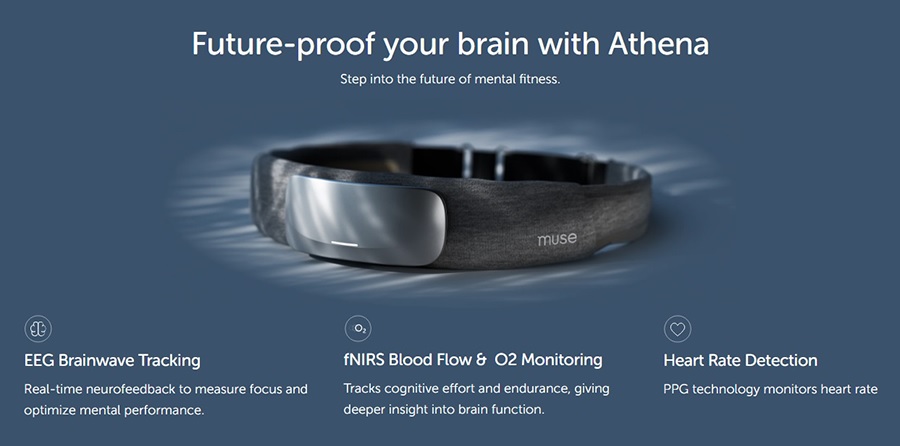
Working from home can feel like trying to concentrate in a grocery store. The brain keeps glancing at snacks, chores, and notifications while a video meeting hums along. Fatigue follows not only because the work is hard, but because the environment and schedule quietly pull attention in ten directions. The goal here is to build a home setup and a daily rhythm that supports steady focus without harsh effort. You learn simple routines, breathing and movement anchors, and ways to use feedback tools to notice strain early and recover well. Think of this as an attention gym you can run from your kitchen table, with less eye strain and more finished tasks.
Contents
Why Remote Work Drains Attention
Remote work looks calm from the outside. Inside the head, it can feel like a crowded intersection. There is less friction between roles, which sounds efficient at first. In practice, that thin wall between tasks creates constant context switching. You answer a message while heating lunch, then glance at laundry, then return to a spreadsheet that now feels colder. Each small jump costs you time and mental fuel. Over a day, the costs add up to a felt heaviness that people call Zoom fatigue or screen fog. The feeling is real and it has understandable ingredients.
A major ingredient is visual load. Screens present faces at a close distance, often with imperfect lighting and lag. Your brain works harder to read expressions and to detect turn taking cues. Staring into a small camera while watching yourself in a corner tile adds social evaluation that would be softer in person. Add poor posture and shallow breathing and you have a recipe for higher arousal with lower quality attention. The result is jittery focus that drifts or locks up.
Another ingredient is the absence of natural breaks. Commuting used to provide a built in transition. Hallway chats used to reset the eyes and the nervous system. At home, meetings chain together because the calendar allows it. Without a plan, the day becomes a flat stretch of screen time with only a snack for punctuation. Fatigue grows not from one meeting, but from the lack of recovery between them. The fix is not heroic endurance. The fix is structure that respects how attention and energy actually work.
Designing an Attention Friendly Home Office
You do not need a perfect studio to protect focus. A few targeted changes make a big difference. Start with light and posture. Aim for soft, indirect light in front of you and avoid bright windows directly behind your screen. This keeps your eyes comfortable and reduces the sense that you must squint at your work. Sit tall on your sit bones with feet grounded. If your chair is too low, add a cushion. If your desk is high, add a footrest. Small adjustments change breathing patterns and visual comfort, which lowers the baseline load on attention.
Next, create a visible ritual for starting focused work. Place a glass of water on the right, a small paper card with your top task, and a timer. Clear a small square of desk space. These cues tell your brain, this is single task time. When you switch to collaboration mode, change the scene. Turn on a small lamp or move your laptop to a different spot. The change signals a new state without much effort. If you share space, agree on a cue that shows you are in a focus block. A light, a sign, or closed door can all work. Simple, polite signals prevent constant micro negotiations.
Sound management matters as well. Constant speech in the background is distracting even when you think you are used to it. Use closed back headphones for meetings and open back or speakers for solo work so you do not feel boxed in. For noise control, try soft consistent sounds like a fan rather than music with lyrics when writing. Some people focus better with nature sounds at low volume. Experiment for a week and pick one default. Decision fatigue drops when you standardize the basics.
Training Protocols to Beat Screen Fatigue
Protocols make practice automatic. The best ones are short, repeatable, and easy to restart after interruptions. Here are building blocks you can stack through the day. Treat them as recipes, not rules. Adjust to your job and your body.
Focus sprints with real breaks
- Warm up: two minutes of slow nasal breathing, in for four counts and out for six. Sit tall and let your eyes relax.
- 25 minute sprint: pick one outcome, set a simple timer, and work only on that outcome. If a new thought appears, capture it on paper and return to the target.
- Five minute break: stand, sip water, and look far away. Add a brief stretch for calves and hips. Avoid phones during this pause. The reset is sensory, not informational.
Eye and posture care
- 20 20 20 rule: every 20 minutes, look at least 20 feet away for 20 seconds. This relaxes eye muscles and reduces headaches.
- Visual field softening: once per hour, widen your gaze to include the edges of your vision for five breaths. Many people notice an immediate drop in tension.
- Posture reset: imagine a string lifting the crown of your head, then let your shoulders drop. Two breaths later, resume work.
Movement snacks that wake up attention
- After long meetings, do a staircase lap or a one minute brisk walk. If you cannot leave the room, do ten slow squats or wall push ups.
- Use a light kettlebell or resistance band for 10 to 15 controlled reps at lunch. Lift with care and good form. The aim is circulation, not exhaustion.
- If joints are sensitive, try a gentle yoga flow. Cat cow, hip openers, and a short forward fold can loosen the chain that stiffens during long sits.
These small practices prevent the slow climb of arousal that feels like edginess and the slow slump that feels like fog. The body and the brain work together. When the body gets brief, kind signals of movement, breath, and vision change, the brain can allocate resources to thinking rather than to bracing.
Feedback Tools: Using HRV, EEG, and fNIRS at Home
Feedback turns guesswork into learning. Heart rate variability, or HRV, is a convenient starting point. Many watches estimate it during sleep and some apps teach paced breathing that nudges HRV upward. A simple routine works well: sit for five minutes, breathe at a comfortable slow pace, and focus on long, easy exhales. Over a week, people often notice steadier energy and fewer afternoon crashes. The value is less about chasing a number and more about training a calm starting state for focused work.
EEG based tools offer a view of brain rhythms during attention and rest. The Muse headband is one example. It provides audio feedback while you practice settling your attention. Users often pair five minutes of practice before a focus block to reduce mind wandering. The device is not a medical instrument and it does not diagnose anything. Its practical value comes from making a habit concrete. It turns, be more focused, into a short routine with immediate cues and a record of sessions that helps you stay consistent.
fNIRS devices can estimate changes in oxygenated and deoxygenated hemoglobin near the surface of the brain. Consumer options exist in limited forms, usually with fewer channels than research systems. Their strength is showing relative shifts in blood oxygenation during tasks. You might notice that a planning task produces larger swings than a writing task, which suggests different pacing. If you do not own such a device, you can still use the spirit of feedback. Rate perceived effort on a simple one to ten scale at the end of each block and note what changed it. Over time you will see patterns that guide meal timing, meeting order, and break placement.
A Four Week Home Attention Plan
Use this plan as scaffolding. Keep the tone friendly. If a day goes sideways, restart with the next block rather than waiting for a perfect Monday.
Week 1: Build anchors and visibility
- Set two protected focus blocks per day, 25 minutes each, with the warm up and break structure above.
- Place your cues on the desk: water, paper card with the day’s one thing, and a small timer.
- End each block by rating effort and quality. Write one sentence about light, posture, and interruptions.
Week 2: Add breathing and movement
- Add a five minute HRV style breathing session before the hardest block. Aim for in four, out six, or a similar slow pace that feels comfortable.
- Insert one movement snack after lunch. Keep it brief and consistent.
- If you own an EEG headband such as Muse, add a five minute session before your morning block and track whether effort ratings or mind wandering change.
Week 3: Protect transitions and meetings
- Schedule five minute buffers before and after video calls. Use them for eye resets and posture checks.
- Batch chat and email into two or three windows rather than letting them nibble at your focus blocks.
- Experiment with meeting length. Many teams function well at 25 or 50 minute slots. If you control the invite, try the shorter default.
Week 4: Personalize and sustain
- Review your effort notes and identify your lightest hour. Place thinking heavy work there and defend it kindly.
- Choose two habits that moved the needle and make them non negotiable. Examples include the two minute warm up and the 20 20 20 eye rule.
- Plan a small ritual that signals work is done. Close the laptop, tidy the desk, and step outside for two minutes. Clear endings help the next day start cleaner.
Fatigue during remote work is not a character flaw. It is a sensible response to unstructured demands and constant switching. With a few environmental tweaks, short training blocks, and light feedback, you can reduce the load and produce steadier work with less strain. The payoff shows up in calmer meetings, more finished tasks, and a body that does not feel wrung out at dinner.

